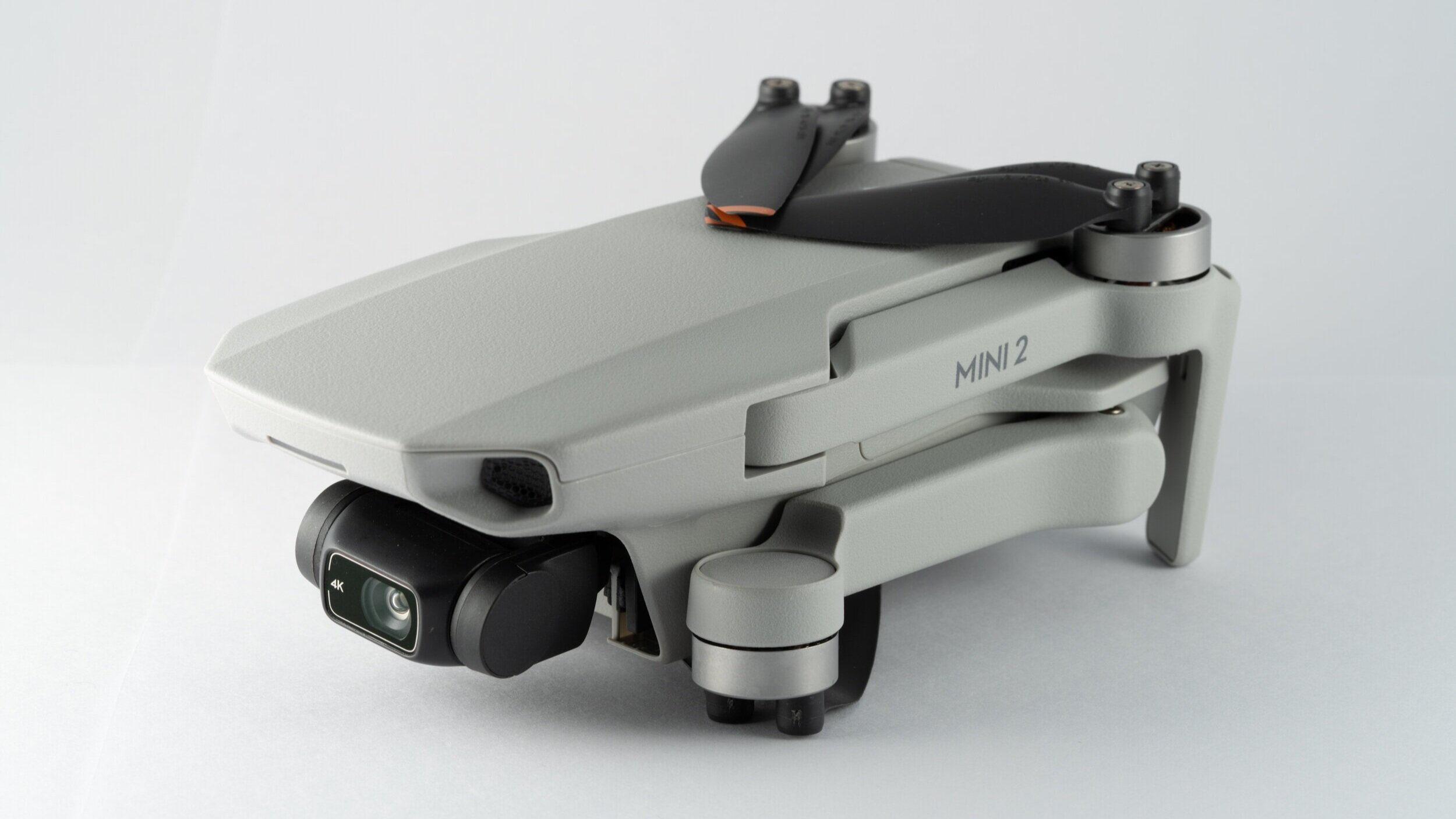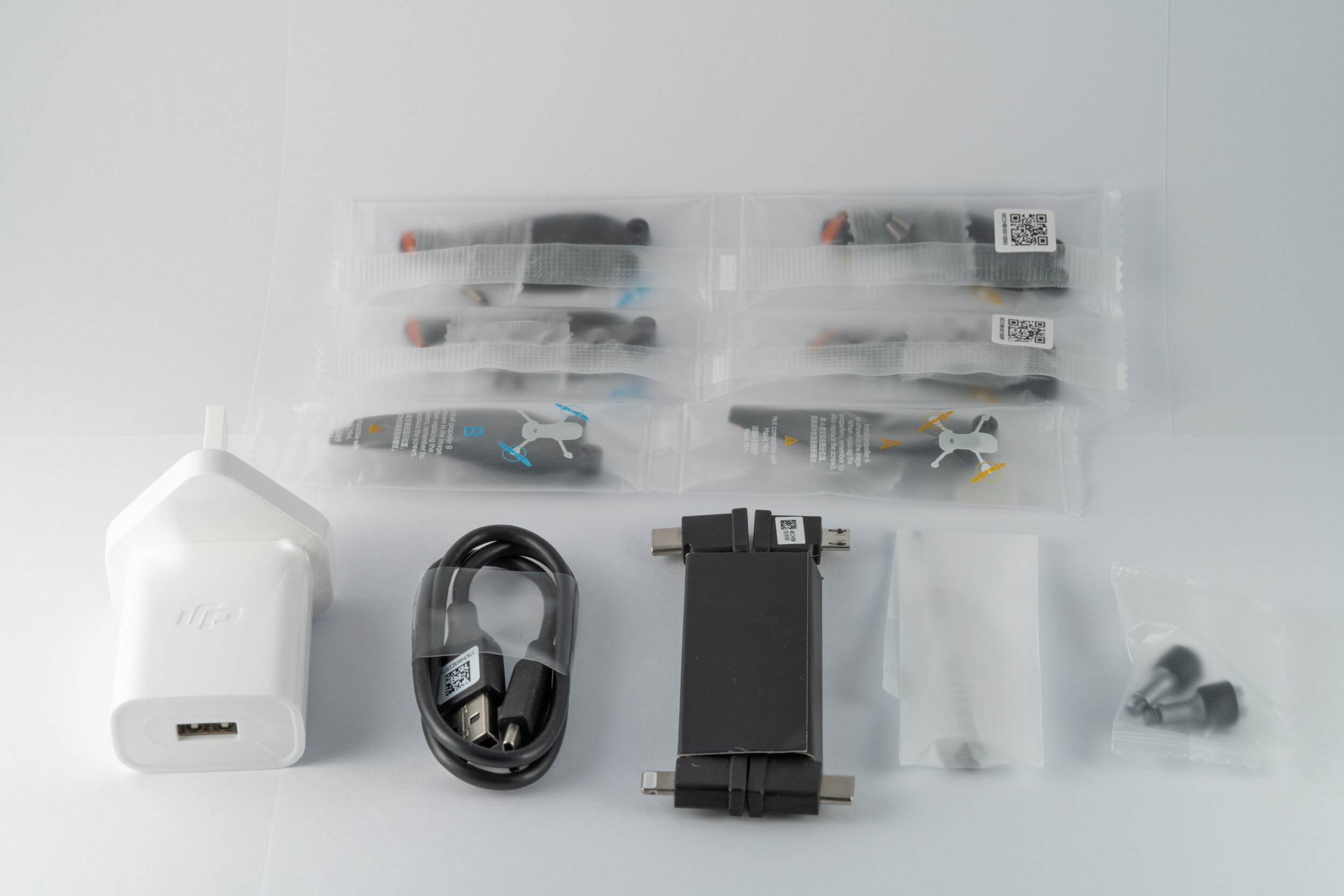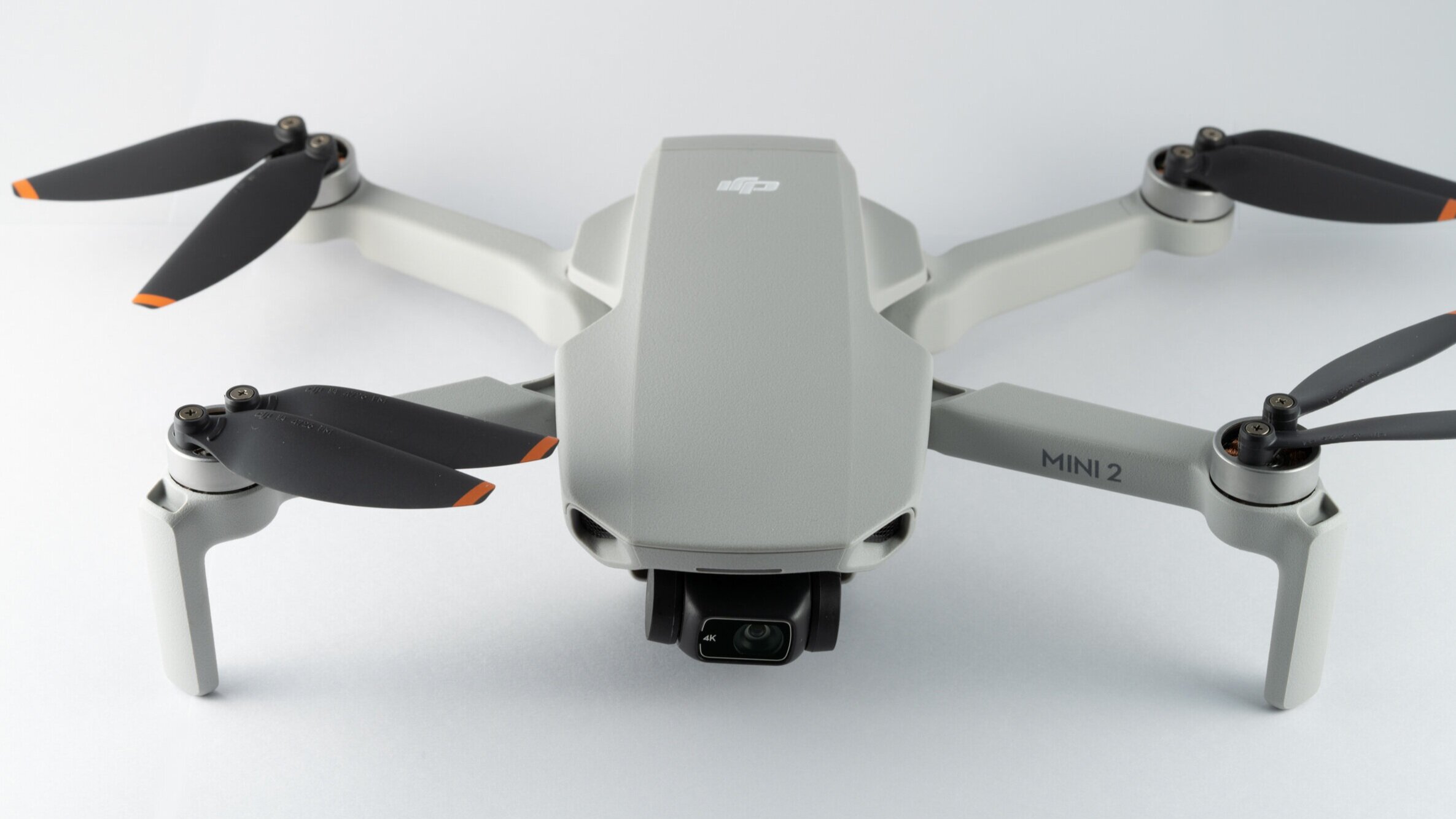DJI Mini 2 Review
Mini drone under 249g with 4k video
DJI Mini 2 (Link)
Announced - Nov 2020, $599 USD for Flymore Combo
Pro
Compact and light
Easy to fly
Good App and Stable Connection
Con
Small CMOS sensor produces mediocre image quality
Some functions do not work as expected and require other program to get the best result
No forward and side vision sensor, so no obstacle avoidance and Active Track
I had the original DJI Mavic Pro a few years ago. I enjoyed flying the drone, but sold it after a year as it got less and less use. The main reason was that it wasn’t easy to carry around in addition to my camera. I like the first DJI Mavic Mini, but it didn’t have 4k recording. Mini 2 finally seems to have checked all my boxes, so I got one in Fly More Combo.
What’s in the box
The combo version comes in a neat padded carrying bag that fits drone, controller, batteries, and all the accessories inside.
Here are the accessories that are included: various cables, charger, spare parts and a screw driver.
Body
The drone is really small (138 x 81 x 58mm folded) at only 239g with a battery loaded, and 187.5g with the gimbal holder, strap and no battery. For reference, a can of 330ml coke is 115.2mm x 66.2mm.
This is how the drone looks like unfolded (159 x 203 x 56mm including the propellers). The gimbal protector and the rubber strap have to be removed before flying.
The lens is a 24mm (full frame equivalent) f/2.8. Behind that is a 12 MP, 1/2.3 inch CMOS sensor. ISO ranges from 100 to 3200 with 1/8000 to 4s shutter speed. It can shoot still in RAW with DNG format, and video in 4k/30p 100Mbps in MP4 format.
The back of the drone has a door for the battery, micro SD card, and a USB C port for charging and data transfer.
At the bottom, there is the only two vision sensors on the Mini 2. Unlike the bigger models, there is no forward or side sensors.
This is the charging case and the three batteries. Three batteries plus the charging case is at 312g. Each battery is rated at 2250 mAh, and provides about 30min flight time each. The case can also be used as a USB power bank.
The controller is about (150 x 103 x 41mm) at 386g, and has a 5200 mAh battery inside that is charged by USB-C.
The cables are hidden under the antenna at the top, which also acts as the phone holder. There is a control dial at left side to tilt the gimbal, and a button at the right side to take a photo or start/stop recording.
The joysticks is removable and to be screwed on before use.
The whole kit (drone, controller and batteries) weights in at 886g in total, lighter than a full frame camera. The kit can fit into the same space in camera bag as well.
Image Quality
Still and Panorama modes
The still image quality is ok in daylight. There is not a lot of details captured with only a 12MP 1/2.3” CMOS sensor. The photos look great on phone, but can see noticeable noises in full size even at base ISO. The quality generally reminds me of cellphone picture before computation photography.
The dynamic range is pretty narrow with the 1/2.3” sensor. I really recommend shooting in RAW as the JPG color is not very pleasing and tends to blow out highlight on white buildings. There is also a AEB (Automatic Exposure Bracketing) mode that will takes three shots at 0 then +/- 2/3 EV. These are saved as individual files that need to be merged in post. I wish the bracketing range can be adjusted to capture a wider dynamic range.
Next, there are three different panorama modes that shoot multiple shots then stitch together within the DJI Fly app. First is 180 deg, which the drone will shoot 7 shots horizontally. The final image stitched by the app is 6989 x 1339 pixels, much lower resolution than expected. I find this really weird, since a single shot is already 4000 x 3000 pixels. It is best to just use the mode to take the pics, then merge in Lightroom using the raw files. I was able to get 12856 x 2333 pixels out of the same group of shots, almost 4x as much pixels. The resolution difference can easily be seen in the full size image. On the other hand side, the default mode does better job at keeping the exposure even.
Second is a 9 shots mode, basically taking them in 3 x 3 grids and create a wide shot. Just like before, DJI stitched is much lower resolution (4819 x 3739 pixels) than Lightroom (10085 x 7662 pixels).
Third mode is a 26 shots mode that shoots all around the drone like a 360 degree camera. The shots are stored as individual images in a folder and a HTML sidecar file. The easiest way to process and view the image is to share on Sky Pixel within the DJI Fly app: Link
Video
The drone can shoot 4k30p at 100Mbps. The quality is quite good. There are also a few QuickShot (autonomous drone shots) modes available to make some cool camera movements. Below is some sample footage with straight out of the drone color:
One of Mini 2 weakness is that it does not have Active Track (Link), which is on every other DJI model. This is probably because Mini 2 does not have forward and side vision sensors for obstacle avoidance. This omission is not very consistent, as the Quickshot functions use object tracking as the drone moves anyway. It should at least have a crippled spotlight mode with fixed drone position. This feature would have been useful to have the camera tracking ferries approaching pier, or car on the road.
Usage Experience
The drone is easy to carry and can fit into the same bag space as a full frame camera with a standard zoom lens. The controller is a bit beefier than expected but is comfortable to hold. It is clever how the sticks is removable, and the cables are neatly tucked under the phone holder/antenna for easier packing. It is great to see everything uses USB-C to charge.
I have flew this drone in a couple of occasions. The whole experience has been greatly improved compared to the Mavic Pro days. The DJI Fly app user interface is easy to understand and responsive. The set up process is painless, and the drone/battery firmware updates are pretty quick.
I also appreciate the map functions that show nearby spots and flight restrictions as it is hard to tell whether there are any helipad nearby. However, beware that this map does not cover all the local restrictions. For examples, some local parks do not permit flying, but are not marked on the map. Therefore, it is best to check for signs/local regulations before take off. DJI HK also gave me a pamphlet on local drone regulation, so it is nice to see they try to be responsible.
Take off is easy by just pressing of a button on screen. Overall flight experience is great, the connection between the controller and drone is stable, much better than my old Mavic Pro. The Mini 2 flies nice and responsive. I flew it around the coast in winds, and had no issue whatsoever. The drone is not noisy, but can still hear it within 30m. The Return Home function works as expected, and the drone is able to return to roughly the take off spot. I then use the controller to guide the final landing.
The battery last about 25 to 30 mins, and is more than sufficient as I tend to have shot all I wanted by 15 mins at a location. I also rarely use all three batteries in a day trip. The controller battery also lasts a long time as well.
Conclusion
The DJI Mini 2 is a great drone for someone that value weight and size. Drones under 250g faces less regulations in some countries. In that case, Mini 2 is pretty much the only drone that would fit under that criteria. However, there are other models in the line up that could be more suitable if size is not a concern. The lack of front and side vision sensors means not having the useful Active Track functions. In addition, they would have helped reducing the risk of accident flying in tight area.
The small 1/2.3” CMOS sensor gives mediocre image quality. The quality reminded me of old cellphone pictures. This is hard to ignore as recent smartphone sensors (108MP on 1/1.3” CMOS sensor) with computation photography technique produces way better result. However, since Mini 2 is the cheapest model in the line up so can’t expect too much…especially the much more expensive Mavic 2 Zoom uses a 12MP 1/2.3” sensor as well. Hopefully, Mini 3 will get a better camera and vision sensors. I would happy to trade to a smaller battery life to have them included. I hope DJI improves their panorama functions to stitch a full size image. It is puzzling why the app only output at reduced resolution which seems to defeat the purpose.
Overall, the Mini 2 is a great addition for someone who already carries a camera when traveling. It fits into the camera bag easily, doesn’t weight much, and allows shooting nice landscape shots from high up in the sky that would otherwise be impossible . If I am a dedicated drone shooter, I would definitely look into the Mavic 2 Pro with the 1 inch sensor or the Air 2 as they have better image quality and more features. However, there is a saying that the best camera is the one you have with you. In this case, the best drone is the one you have with you.
Sample Gallery (Unedited, SOOC JPG)











































